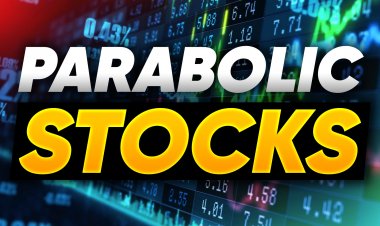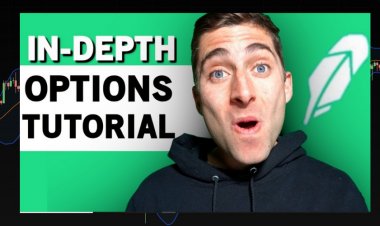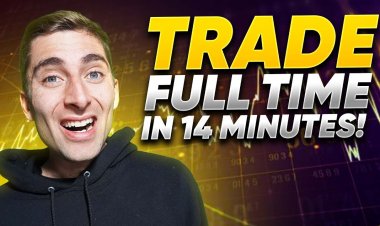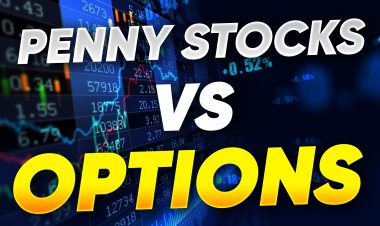What is a Call Sweep? | How to Trade Unusual Options Activity
Like most people, you have no idea what a "call sweep" is. That's okay - we're here to help! This blog post will discuss what a call sweep is and how you can use it to profit from unusual options activity. We'll also provide some examples of how you can spot potential call sweeps in the market. So, if you're interested in learning more about this topic, keep reading!
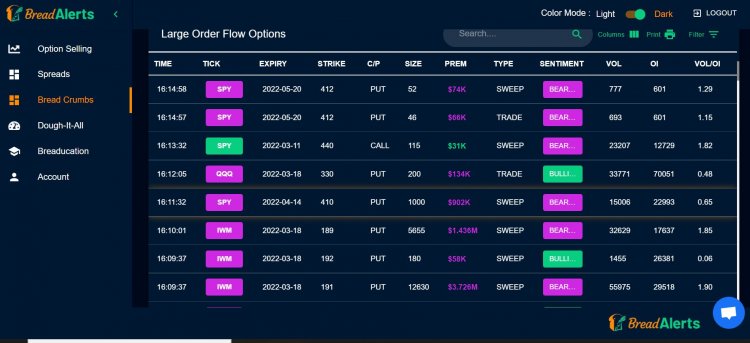
What is Unusual Options Activity?
Unusual options activity is defined as a sudden increase in the number of options contracts being traded for a particular stock. This activity can be caused by several factors, including rumors, news, or even insider trading.
Importance of Unusual Options Activity?
There are several reasons why you should pay attention to unusual options activity. First and foremost, it can be used as a tool for predicting stock price movements. When there is an abnormal amount of options trading taking place, it's often an indication that something big is about to happen with the underlying stock.
Another reason to monitor unusual options activity is that retail options traders can use it to identify potential trading opportunities. For example, if you see a large number of call contracts being traded for a particular stock, there may be an opportunity to sell puts or buy calls. While there are many ways to read unusual options activities to understand the markets, one of the most popular strategies we will talk about today is Call Sweeps.
Smart Money vs. Retail Traders
There are two types of options traders - smart money and retail options traders. Smart money includes institutional investors, such as hedge funds and mutual funds, while retail options traders are individuals who trade for themselves.
When it comes to options trading, smart money is typically more sophisticated than retail options traders. As a result, they have access to better information and resources, which gives them an advantage in the market.
One way to level the playing field is by paying attention to unusual options activity. This activity can be a valuable indicator of where the smart money is placing its bets.
Example of Underlying Stock: SPY
Let's look at an example to help illustrate this concept using this unusual options activity scanner called BreadAlerts. On March 6, the options volume for SPY calls came in at $1.6 million, while the number of puts came in at $5.4 million. The graph totals the number of "large or unusual orders" placed on the SPY for this day. A large order is typically one single option order with a size over $25,000. Since most traders cannot place orders this large, we assume smart money is behind these orders.
Next, let's dive into the actual orders for the SPY and sort them from largest to smallest. Looking at the most significant orders, we can see the biggest bets placed by smart money. Typically if the most important orders placed are all in one direction (calls or puts), this tells us a directional bias in the stock, which can be helpful for traders to play.
If you were watching SPY's options activity that day, you would have noticed that most of the trading was taking place in the put options. More specifically, there was heavy put activity for orders with a size over $100k.
This surge in put buying activity can cause the price of these options contracts to increase sharply, with high volume and open interest being low. BreadAlerts allows traders to see the volume and open interest readings on the right. As you can see below, the first order has a VOL/OI reading under one, which is highly aggressive. The order type also confirms this, which appears to be a "sweep."
Types of Unusual Option Order Types
Two main types of unusual option orders can be placed by smart money. First, understanding which kind of order was placed can give us more insight into how aggressive and meaningful the order was.
Order Type: Option Trade [Limit Order]
The first type of order is a "trade." When an options flow scanner marks the large order as a "trade," this means that the order was placed strategically as a limit price order. Orders placed as a limit order are the least type of aggressive order because it takes time to get filled. Limit orders can try and enter at the best prices to save money. Limit price orders also can be shorted, which can have a reverse meaning for the order. Short put orders are bullish, and quick call orders are bearish. The smart money has a higher chance of selling options with these orders.
Order Type: Option Sweep [Market Order]
The second type of order is a "sweep to fill order." This large order was most likely placed aggressively as a market order. Orders placed as a market order are the most aggressive orders because they get filled quickly (sometimes instantly). Traders using market orders are not interested in saving money trying to enter between the bid price and ask price (or the bid-ask spread).
Once the market order is executed, the options exchanges will fill the trade wherever the sellers are with the available contracts. This usually means buying the contracts for a large premium, causing the trader to lose money instantly on the transaction. The aggressiveness of the move is an opportunity for traders to play the direction of the order.
If there are many calls or put sweeps in one day, this gives traders a high likelihood of seeing a move in the underlying stock in the future. Why else would the smart money pay more for an option unless they knew something we didn't? The whole idea behind large options orders is that the institution traders will leave footprints or hints about where they want the underlying stock to go.
In the large option scanner example below, we can see that some orders are trades, and some are sweep to fill orders. While trades can still be meaningful, finding large sweeps can be highly beneficial to option traders.
Key to Reading Unusual Options Activity
Now that we've looked at an example of how to read unusual options activity let's go over some key points to keep in mind.
- When the majority of option orders are placed in one direction (calls or puts), this indicates a directional bias.
- High volume and low open interest can cause the price of options contracts to increase sharply.
- Look for option orders with a size over $25,000 to identify potential trading opportunities.
- Trade order types are the most strategic and give us lower conviction in a move from option buying as the options contracts could have been shorted.
- Trade order types mean the institution traders want to fill at the best prices.
- Large orders shorted have a reverse meaning to traders where Calls are bearish and puts are bullish.
- Option Sweep to fill order types are the most aggressive and give us the highest conviction in a move possible from buying all the available liquidity.
- Option sweep orders all smart money to get filled, quickly, and for a premium
What is a Call Sweep?
A call sweep is an options trading strategy that involves the simultaneous purchase of a large number of call option contracts. The purpose of this strategy is to "sweep" up as many option contracts as possible as quickly as possible.
Call Sweep Trading Opportunity
To understand if the call sweeps are a tradeable opportunity, it is essential to analyze the option order flow in-depth. For this example, we will be looking at MRO's option flow. As you can see below, many calls were being bought, mostly call sweeps. So next, let's dive into all the important factors that need to be reviewed.
Checking the Total Amount of Large Call and Put Orders
Call sweeps are more meaningful if a smaller amount of put sweeps were that day. The key to reading large options orders is to find an unbalanced amount of option buying. This will give traders a higher indication of a bias shown through the footprints of option order flow. In the example below, we can see a massive bias towards calls, as there was $644k purchased while no puts were bought. This lopsided call premium gives us a large bullish bias for the stock.
Checking the Sweep Premiums
Call sweeps are more meaningful if the premium is over $50k-100k. The larger the order, the bigger the bet by institution traders. That is why it is essential to check the premium column. The trader also should view the total premium for the day because more orders give us more conviction. Just a couple of call sweep orders could lead to hit or miss trading opportunities. In the example above, we can see that the top 4 orders were over $50k, giving us a higher conviction in a bullish move. There are also many orders under $25k, which provide some balance in the options order flow.
Checking the Sweep Expiration Dates
Call sweeps are more meaningful if the expiration dates are shorter term. This gives traders a higher chance of seeing the move sooner. Further out expiration dates can be more of a bet or hedge for large institutions and not exciting for traders as it may take time to see the result. In the example below, we can see a majority of the call option buying happened within 1-4 months. We would like to see a quick move to see a majority of the options being bought 1-2 months away. Nonetheless, this option buying is partially bullish for the short term.
Looking for the Trade
If the option order flow is appropriately analyzed, most retail traders will ride the waves of big money as they have a more significant pull on the stock market. From looking at the orders, many 4-14 expiration date calls were being bought at the 21 strike price. Retail traders have the opportunity to copy that exact order and be in the same trade as a large institution. This could also be done for the 7-15 expiration date and respective strike price.
Institutions Can be Wrong
While these orders give retail options traders a higher conviction in a directional stock move. Too many other factors can make this a misleading signal for traders. Let's go through all the risks below:
- Large institutions can be wrong
- These options could have been shorted (which means a bearish order)
- Large institutions could be hedging (not caring about the directional movement)
- Large institutions could be trading (in and out)
With all that being said, it is crucial always to define the risk in the trade and respect it. Nothing will make money 100% of the time, and as traders, we are always looking for the edge to give us a better chance at succeeding. So please do your due diligence and be smart with your money.
Trade with us!
If you're looking for a more sophisticated and educational options trading experience, look no further than "Market Moves Premium Options Trading Group." Our exclusive 7-day membership offers swing trading set-ups, fast text signals, and +100 hours of educational content. Plus, you'll have access to live trading sessions twice per day. So if you're ready to take your options trading to the next level, join us today!
Financial Disclaimer: Market Moves LLC is a company that provides education in financial and stock market literacy. WE ARE NOT FINANCIAL ADVISORS. In fact, it is illegal for us to provide any financial advice to you. Under U.S. law, the only persons who can give you financial advice are those who are licensed financial advisors through the SEC. Results shown from Market Moves LLC or customers who use our product and/or service are individual experiences, reflecting real-life experiences. These are individual results, and results do vary. Market Moves LLC does not claim that they are typical results that consumers will generally achieve. Past performance does not guarantee future results. You should not rely on any past performance as a guarantee of future investment performance.











